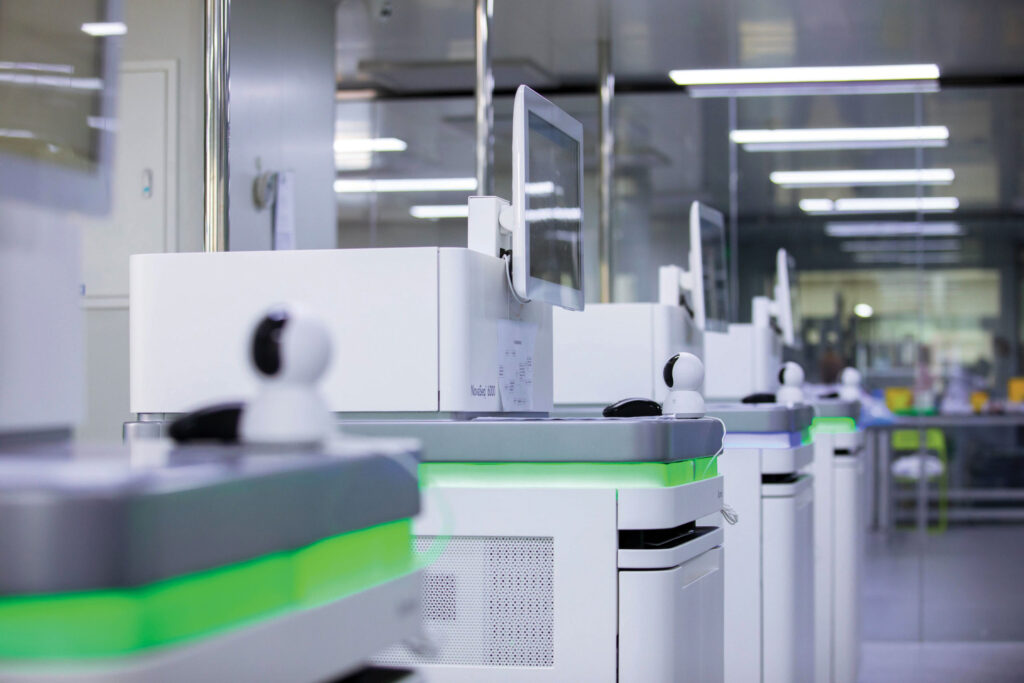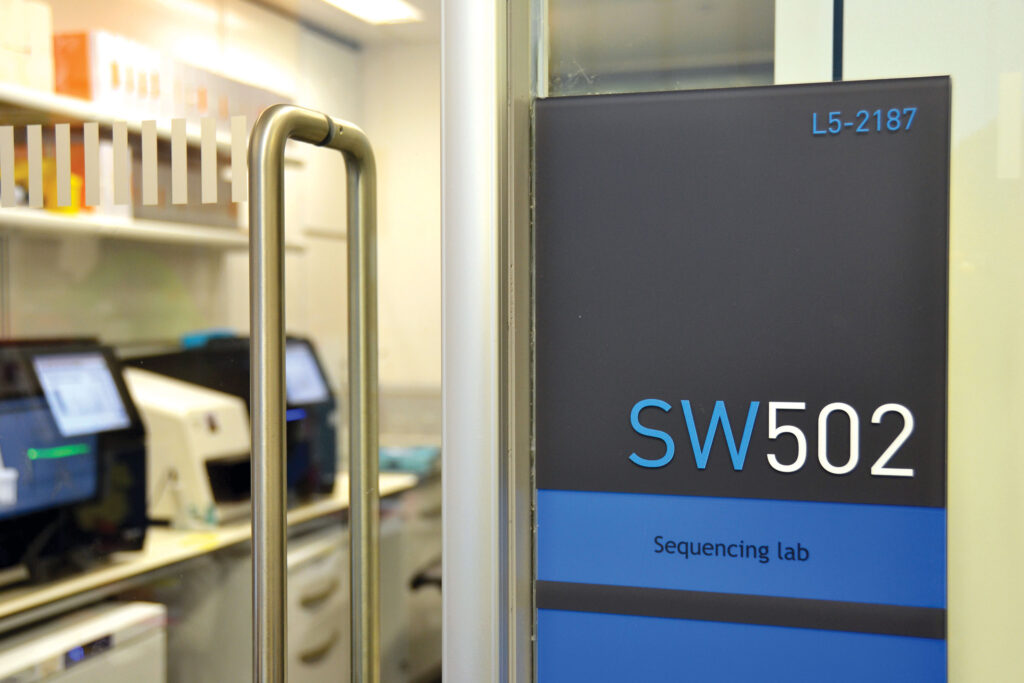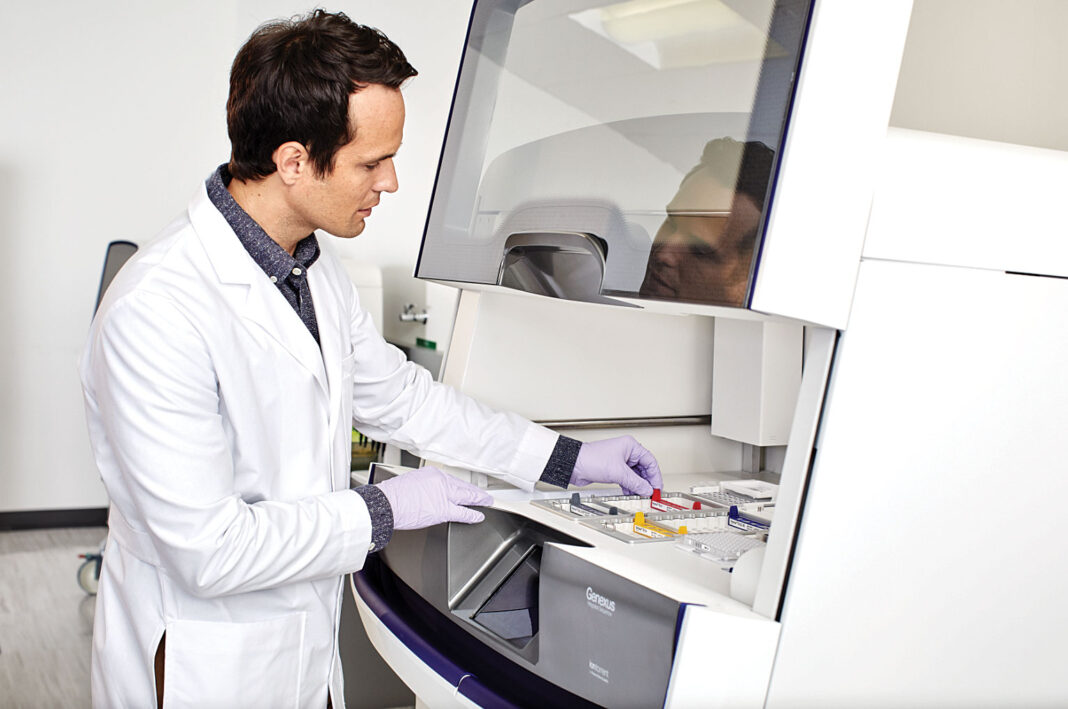As soon the Human Genome Project (HGP) was completed, it was hailed as a landmark scientific achievement. But the important work was just beginning. What made the HGP truly valuable wasn’t just the production of the first complete human DNA sequence. It was the demonstration that if genome sequencing could become powerful enough, it would open new possibilities in basic science and drug development.
Inspired by the HGP, scientists stepped up their use of genome sequencing in genomics, transcriptomics, bioinformatics, and related disciplines. However, genome sequencing took a little longer to make its influence felt in the drug industry.
The delay may seem hard to understand now. Hindsight reveals that genome sequencing has enhanced the drug industry’s ability to identify novel drug targets and to develop large-molecule drugs. Moreover, genome sequencing has made it possible for the drug industry to pursue precision medicine.
The drug industry may have simply been waiting for genome sequencing to become more powerful, suggests Wei Li, PhD, senior product manager, Novogene Europe. As she points out, “First-generation sequencing was used for the HGP, which took 10 years to complete due to the low-throughput nature of the technology and the Sanger sequencing method that was used.”

According to Li, sequencing methods and technologies had to evolve before the biopharmaceutical industry began using them. Also, making processes faster, simpler, and less expensive was vital.
“The sequencing by synthesis method used by next-generation sequencing (NGS) technologies incorporates fluorescent DNA bases into the fragment being sequenced, resulting in an automated readout and interpretation of the sequence,” she points out. “This technology now means that we can sequence multiple human genomes in less than two days, in an extremely cost-effective manner.”
Jérôme Nicod, PhD, head of advanced sequencing at the Francis Crick Institute, agrees that the development of NGS was the breakthrough: “Traditional Sanger sequencing was invented in the 1970s, allowing the sequencing of a single molecule of DNA up to 1,000 bp in length. NGS allows the sequencing of billions of molecules at the same time, [a capability called] highly parallel sequencing, so that a single human genome, for instance, can be fragmented in short pieces of DNA and ‘read’ in one reaction.”

Nicod emphasizes that the advantages of NGS include speed increases and cost reductions: “Although the first human genome took years and billions of dollars to achieve, it is now possible with NGS technology to sequence a genome in a couple of days and for less than $1,400.”
Improving drug development
The ability to quickly sequence multiple genomes makes it possible to compare sequences among multiple genomes and to contextualize individual genomes, revolutionizing diagnosis. “Through whole genome and whole exome sequencing, clinicians can detect patient-specific mutations in diseased tissues,” Li explains.
These sequencing techniques, she adds, can also “guide researchers in the development of drugs for precision medicine and targeted therapies.” For example, NGS is enabling developers to identify and characterize novel molecular targets, including targets that could lead to treatments for previously untreatable illnesses.
“The identification of drug targets for various diseases can also be expedited by NGS, as can the detection and tracking of molecular responses to treatment at the transcriptomic and epigenetic levels,” she elaborates. “This provides direction for further treatment. NGS can be exploited as a dynamic tool in the biopharmaceutical industry, aiding in the understanding of disease mechanisms, the identification of biomarkers, and the development of new drugs.”
A sequencing-based approach has been adopted by the National Health Service (NHS) in the United Kingdom. Specifically, the NHS, through its Genomic Medicine Service, is bringing “sequencing to the bedside,” Nicod remarks. He maintains that with this service, it is now possible “to interrogate the genome of any patient suffering from cancer of unknown etiology, to try to identify the cause of disease and inform treatment.
“NGS can also be used to identify and analyze any infectious agent, or to monitor a pandemic in real time, as is currently done in this country by the COVID-19 Genome Consortium UK (COG-UK),” Nicod continues. He adds that NGS is also improving gene expression or epigenetic analysis.
Facilitating biomanufacturing
Drug manufacturing has also benefitted from advances in sequencing. The ability to quickly analyze the genomes of cell lines to find the most productive clones is an obvious advantage from a process development perspective.
When asked about the impact of NGS, Jason Myers, PhD, CEO of sequencing technology developer GenapSys, begins by observing that NGS is “aiding in the development of precision medicine for personalized treatments and companion diagnostics” and “allowing pharmaceutical companies to take a more personalized approach to drug development.”
He then describes how NGS may impact the factory floor: “Genome sequencing has the potential to extend beyond drug research to improve the process of drug manufacturing. One application of impact is environmental monitoring of microbial contaminants in biopharma manufacturing. In quality control processes, NGS technologies can be used to look for microbial contaminants to provide accurate surveillance of the drug manufacturing facility.”
A similar point about the value of NGS in quality control processes is made by Andy Felton, PhD, vice president of product management at Thermo Fisher Scientific. “For pharmaceutical manufacturing,” he says, “the ability to identify the presence of microbial contaminants in biologic or small-molecule manufacturing processes rapidly and precisely, in an unbiased fashion, and without the requirement for long periods of culturing, is groundbreaking and allows for much faster batch release processes.”
The development of expression systems may also be improved with NGS. For example, NGS makes it possible to carry out cell line identification by “checking a variety of single-nucleotide polymorphisms and determining whether the cell line has been altered at the DNA level in terms of copy number or other alterations,” Felton explains. “[NGS can also be used to assess] the insertion of new genes into cell lines and whether there are any possible off-target insertions.”
Advancing personalized medicine
For Olaf Stamm, PhD, scientific advisor, biologics testing at Charles River Laboratories, NGS is quite simply the foundation on which the modern biopharmaceutical industry is built.
“The limitations of traditional sequencing forced researchers to focus on certain genes or regions without really knowing much about the genomic context or the interactions on the genomic or transcriptomic levels,” he says. “With NGS, this black box element has been eliminated.” He adds that “major achievements were made with respect to biomarker detection and epigenetic analysis,” and that genetic modifications of cells and organisms became “much more targeted.”
The approach has also changed how biopharmaceutical companies test candidate products in the clinic. According to Stamm, NGS can support biopharmaceutical drug development “from early discovery stages—target identification, for example—up to a more efficient design of clinical trials.”
Efforts to develop patient-specific therapies also rely on NGS. The commercial viability of such advanced therapies depends on the ability to sequence genetic information rapidly and accurately.
“The concept of personalized medicine would not be realized in cell and gene therapy applications without the availability of the full nucleic acid sequence information,” Stamm explains. NGS has significantly reduced the time and costs of analyzing individual genomes and obtaining the sequence information that is foundational to the development of tailored therapies. Without sequence information, the new tools used for gene editing could not work efficiently.
This view is shared by Thermo Fisher’s Felton, who says that in cell and gene therapy, it is “critical to establish the identity of the cells and to understand the nature of the gene insertion events that have transformed them.”
He reinforces this point with a specific example. He says that in adenovirus-associated vectors or other viral vectors, the sequencing of the inserted genes is necessary to determine whether the insert is where it is expected to be, and whether it has the sequence that was expected. He adds that modified T cells can be assessed for clonality to determine whether a particular clone is being utilized.
Addressing potential users’ concerns
Whether more biopharmaceutical companies adopt NGS for drug development, manufacturing, and clinical trial planning will depend on how practical and affordable NGS technologies and methods become.
“Sequencing is still perceived as too expensive and complicated for many labs,” Fenton stresses. “We need increased education on how the technology has evolved to make it more accessible for labs, including those in community-based health settings. Today, NGS can provide results in the same timeframe as many single-gene tests but with higher reliability and more comprehensive, actionable results—and at a similar or even lower cost.”
Fenton observes that the pandemic has increased the biopharmaceutical industry’s use of NGS. “COVID-19 has accelerated NGS adoption in many ways,” he says. “Public health labs and researchers have answered the call for increased SARS-CoV-2 sequencing by launching or expanding the use of NGS to identify viral mutations and monitor the spread of new variants of concern.”
And as the pandemic starts to subside, companies that have invested in sequencing are likely to find more applications, Felton suggests. One potential application area is disease diagnosis, particularly now that a decentralized NGS network is being created.
“The NGS network brings the technology closer to the patient and can enable increased access to comprehensive genetic testing at the community level,” Fenton explains. “Through this expanded network, we may soon expect to see NGS used more broadly for infectious disease surveillance, for example.
“In addition, expanded use of NGS may enable it to become a standard of care in guiding treatment decision-making for certain cancers, such as lung cancer, where numerous targeted therapies have already been approved and validated in clinical practice.”
Nicod also says that costs need to come down for industry to fully embrace NGS. “The future of NGS is at different levels,” he points out. “First, NGS should evolve to be cheaper and more accessible so that it can be more widely used for scientific and clinical applications, especially in low-income countries, where access is still limited by high capital and running costs.
“Second, we should see an improvement of long-read sequencing that is commonly called third-generation sequencing. This technology already exists but needs to improve in quality or costs. Finally, we will see more methods to apply NGS at single-cell resolution.”
Ensuring quality and regulatory compliance
“Currently NGS is mainly applied during discovery and early development of biopharmaceuticals, but it is used much less during manufacturing or release testing,” Stamm observes. “The main reasons include the challenges associated with using complex hardware/software in a quality-ensured environment.
“In the future, it will be necessary to address data integrity, data reprocessing, and long-term storage issues to meet requirements from regulators. This will open up the field for new applications.”
According to Stamm, contamination testing currently relies on a complicated mix of in vitro/in vivo and single PCR assays. Much of this testing, he suggests, can be handled with an NGS approach, accelerating development and expediting release testing.
Stamm also notes that the use of NGS in drug manufacturing and quality control is of growing interest to organizations such as the U.S. Food and Drug Administration and the European Medicines Agency. “Many regulators are embracing this technology as they understand the advantages of these new tools,” Stamm declares. “It is up to the industry to shift from traditional test methods to new NGS-based solutions.”

